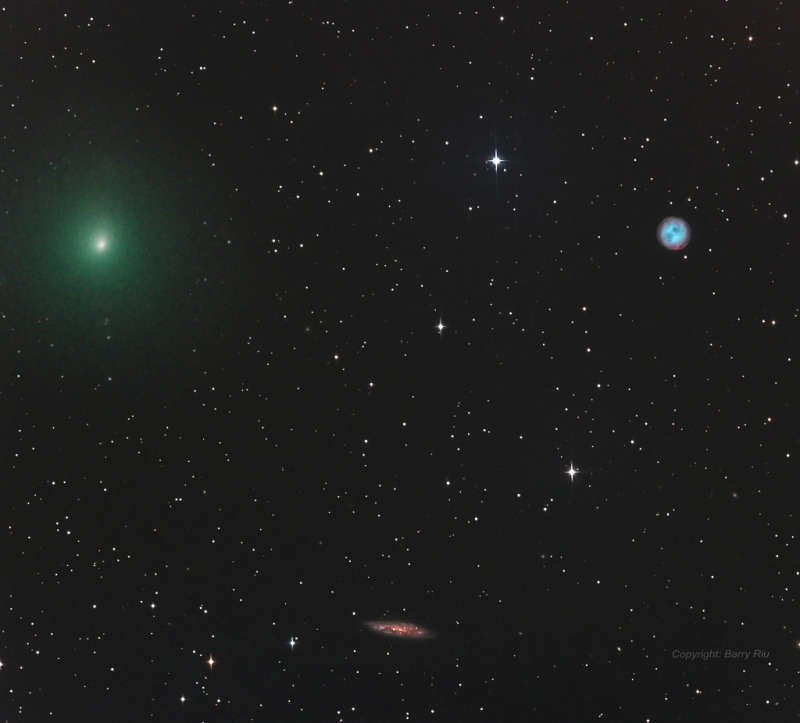Credit & Copyright: Barry Riu
Explanation:
Comet 41P/Tuttle-Giacobini-Kresak
poses for a Messier moment in this telescopic snapshot from March 21.
In fact it shares the 1 degree wide
field-of-view with two well-known entries in the 18th century
comet-hunting astronomer's
famous catalog.
Sweeping through northern
springtime skies just
below the Big Dipper, the faint greenish comet
was about 75 light-seconds from our fair planet.
Dusty, edge-on spiral galaxy Messier 108 (bottom center) is more
like 45 million light-years away.
At upper right, the planetary nebula with an aging but intensely
hot central star, the owlish Messier 97 is only
about 12 thousand light-years
distant though, still well within our own Milky Way galaxy.
Named for
its discoverer and re-discoverers, this faint periodic comet was
first sighted in 1858 and not again until 1907 and 1951.
Matching orbit calculations indicated that the same comet had been
observed at widely separated times.
Nearing its best apparition and closest
approach to Earth
in over 100 years on April 1,
comet 41P orbits
the Sun with a period of about 5.4 years.
1999 2000 2001 2002 2003 2004 2005 2006 2007 2008 2009 2010 2011 2012 2013 2014 2015 2016 2017 2018 2019 2020 2021 2022 2023 2024 2025 |
Январь Февраль Март Апрель Май Июнь Июль Август Сентябрь Октябрь Ноябрь Декабрь |
NASA Web Site Statements, Warnings, and Disclaimers
NASA Official: Jay Norris. Specific rights apply.
A service of: LHEA at NASA / GSFC
& Michigan Tech. U.
|
Публикации с ключевыми словами:
comet - кометы - туманность - галактика, спиральная
Публикации со словами: comet - кометы - туманность - галактика, спиральная | |
См. также:
Все публикации на ту же тему >> | |
